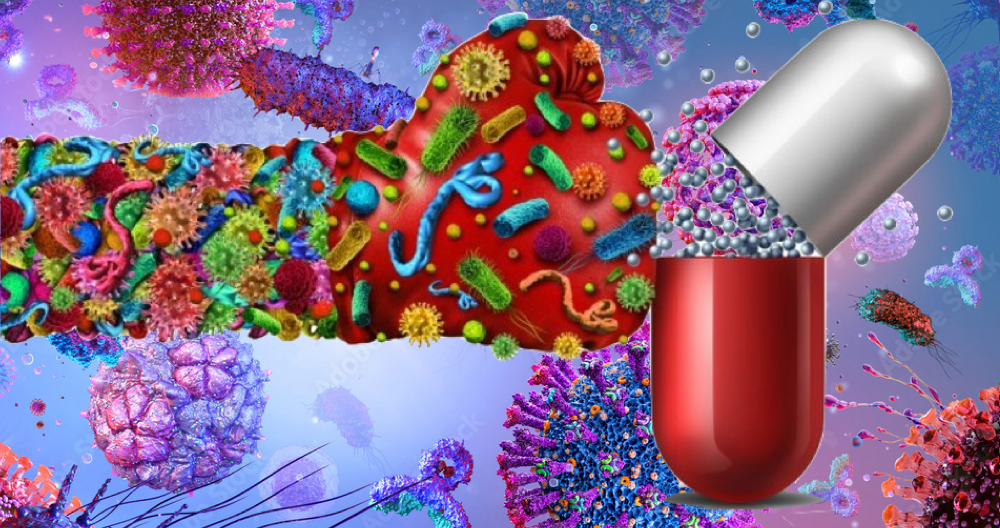Antimicrobial resistance (AMR) has emerged as a critical issue that threatens the healthcare profession, healthcare workers, and patients alike. Hospitals, healthcare settings, and even homes are increasingly harboring bacteria, viruses, fungi, and insects that resist our once-effective treatments. This phenomenon is more than a challenge; it is a profound threat that could set modern medicine back to an era where minor infections, which we currently treat with ease, could become deadly once again.
Understanding Antimicrobial Resistance
AMR occurs when microorganisms like bacteria, viruses, fungi, and parasites evolve to withstand drugs that would typically eliminate them. This resistance is primarily due to overuse and misuse of antimicrobial agents in both healthcare and agricultural settings. Once resistant, these pathogens can spread within healthcare settings, especially in hospitals where antibiotics and antiseptics are extensively used, putting patients and healthcare workers at higher risk.
The Risks Posed by Resistant Pathogens in Healthcare Settings
Infections in Vulnerable Patients: Patients in hospitals, particularly those in intensive care units (ICUs) or undergoing invasive procedures, are highly vulnerable to infections. If these infections are caused by resistant pathogens, treatment becomes more challenging, leading to prolonged hospital stays, higher costs, and, in some cases, increased mortality.
Threat to Healthcare Workers: Resistant organisms in healthcare environments pose a risk not only to patients but also to healthcare workers who are exposed to these pathogens. Continuous exposure, particularly with limited or ineffective protection, can make healthcare workers vectors of transmission and, in some cases, victims of difficult-to-treat infections.
Impact on Minor Surgeries and Procedures: Sterilization is crucial for preventing infection during surgeries and minor procedures. However, with certain bacteria developing resistance to traditional sterilization and disinfectant methods, even basic procedures could carry infection risks. If resistance continues to increase, routine surgeries and minor injuries might come with significant infection threats.
Common Resistant Pathogens in Healthcare Settings
Here are some of the most concerning antimicrobial-resistant organisms found in hospitals:
Bacteria:
- Methicillin-resistant Staphylococcus aureus (MRSA): Commonly colonizes skin and can lead to severe infections.
- Carbapenem-resistant Enterobacteriaceae (CRE): Resistant to last-resort antibiotics, it often causes difficult-to-treat infections.
- Vancomycin-resistant Enterococci (VRE): Primarily infects the intestines and urinary tract, common in hospital settings.
- Clostridioides difficile (C. difficile): Causes severe diarrhea and inflammation of the colon, particularly resistant to common disinfectants.
- Acinetobacter baumannii: Often colonizes wounds and respiratory systems, highly resilient to environmental cleaning.
Fungi:
- Candida auris: Known for its resistance to multiple antifungal medications and can persist on surfaces for extended periods.
- Aspergillus fumigatus: Resistant strains can colonize hospitals, affecting patients with weakened immune systems.
Viruses:
- HIV: Though not resistant in terms of antibiotics, certain strains have shown resistance to antiretroviral therapy, complicating management.
- Influenza: Some strains, particularly in recent flu seasons, have developed resistance to antiviral medications, increasing the risk of outbreaks in healthcare settings.
- Hepatitis B and C: Strains resistant to antiviral drugs can complicate infection control and patient management.
Impact of Resistant Sexually Transmitted Diseases
Sexually transmitted infections (STIs) are not exempt from the AMR threat. Gonorrhea, in particular, has shown alarming resistance patterns. Neisseria gonorrhoeae, the bacteria causing gonorrhea, has developed resistance to many antibiotics, including cephalosporins, the current mainstay of treatment. With fewer options left to treat resistant gonorrhea, individuals are at higher risk of severe reproductive health issues, complications during pregnancy, and increased susceptibility to HIV.
Insects and Pesticide Resistance
AMR is not limited to microorganisms. Certain insects, particularly those that act as vectors for disease, are developing resistance to pesticides. For instance:
Mosquitoes: Some species, particularly those carrying malaria, dengue, and Zika, have developed resistance to commonly used insecticides. This makes it harder to control outbreaks, especially in tropical regions.
Bedbugs and Lice: Bedbugs and lice have become resistant to many over-the-counter treatments, making eradication challenging in hospitals and nursing homes, where infestations can pose significant health concerns.
Biocide Resistance and Its Implications for Healthcare
Biocides, which are chemical agents used to destroy harmful organisms, are critical in sterilizing equipment, disinfecting surfaces, and managing infection control. However, some microorganisms are developing resistance to these agents, making it harder to maintain sterile environments in healthcare facilities. The implications are vast:
Sterilization of Equipment: If bacteria resist biocides, even sterilized equipment could harbor harmful microorganisms. This resistance complicates the disinfection process for surgical instruments, endoscopes, and other critical devices, raising the risk of infection during surgeries and procedures.
Disinfection of Surfaces: Hospital surfaces, such as bedrails, doorknobs, and medical equipment, require rigorous disinfection. Biocide-resistant pathogens can survive on these surfaces, increasing the risk of transmission from surface contact.
Responding to the AMR Threat
To address the threat of antimicrobial resistance in healthcare settings, several strategies must be adopted:
Enhanced Infection Control Measures: Hospitals and clinics need to implement stricter infection control practices, including more frequent disinfection of surfaces and equipment with advanced biocides that remain effective.
Antibiotic Stewardship Programs: Healthcare facilities should adopt programs that promote the prudent use of antibiotics, ensuring they are only used when necessary and in appropriate doses. This has not helped bring in changes.
Research and Development: Investment in new antibiotics, antivirals, and antifungals is essential to stay ahead of evolving resistance patterns. Additionally, new biocides and sterilization technologies must be developed to address emerging resistance in healthcare settings.
Global Collaboration and Monitoring: AMR is a global issue that requires international cooperation. Surveillance systems that monitor resistance patterns and emerging pathogens are essential to anticipate and contain outbreaks.
Education and Awareness: Educating healthcare workers, patients, and the public about the risks and implications of AMR can help promote better practices in both healthcare and community settings, ultimately reducing the misuse of antimicrobial agents.
Conclusion
Antimicrobial resistance in healthcare settings poses a critical threat to patient safety, the medical profession, and society as a whole. Without decisive action, the ability to perform routine medical procedures, treat infections, and protect public health could be severely compromised. A concerted, multi-pronged approach that includes better infection control, innovative research, global collaboration, and public awareness is essential to contain and manage this growing threat. Only by addressing AMR comprehensively can we ensure that modern healthcare continues to protect and heal rather than becoming a potential site for dangerous, untreatable infections.

